[Norman Gilliland, Wisconsin Public Radio, Host, University Place Presents]
Welcome to University Place Presents, I’m Norman Gilliland. For better or worse, the image of America around the world is shaped probably most by Westerns. And Westerns, of course, are a Hollywood invention. We’re going to look at three key Westerns in particular and determine how the American myth has been shaped by those motion pictures. And my guest is Robert Pippin. professor of philosophy at the University of Chicago. Welcome to University Place Presents.
[Robert Pippin, Professor, Department of Philosophy, University of Chicago]
Thank you. Nice to be here.
[Norman Gilliland]
Philosophy and Westerns. Is there a disconnect there? Or – [laughs] If not, how does it fit?
[Robert Pippin]
Well, I’m – I’m interested in a lot of issues in political philosophy, and political philosophy for the last 150 years or so has been concerned with one central question, which is the rational legitimacy of state power. Why – why do some people get to tell other people what to do and what not to do? Or in the most stark formulations by Marc Faber, What distinguishes the use of coercive violence by one group with their own interests against another group with their own interests from the legitimate power of the state? Very important problem.
But in the history of political philosophy, just as important was the question of the psychological issues involved in allegiance to the state, which is really something that descends from an argument or an appreciation of the greater power of an argument. But it has to do with some fundamental human passions and emotions like fear, love of one’s own –
[Norman Gilliland]
Loyalty.
[Robert Pippin]
Pride, loyalty. Yeah.
So, we don’t have a good way in the current language of political philosophy to discuss the issue of political psychology – the psychological states of human beings relevant for the success of political allegiance gripping a group of people in a nation-state, for example. And it occurred to me that many of the great Westerns were explorations, in cinematic terms, of the issue of – especially the issue of the transition from a lawless situation, which, in philosophy, we very often like this state of nature fiction, and its transition to a civil order, a legal order – not just with police and the apparatus of the state, but with domestic peace, security, marriage, families, the kind of thing that was the topic of most of the great Westerns. How does this transition work, and how is it effective psychologically? How do you get from a tradition in which the martial values of honor, violence, and machismo, and so forth, were the most important things for survival to a culture where all of that has to be suppressed? And it’s disruptive and anarchic in a civilized order. And that’s an enormously tense situation, psychologically, not just philosophically. So, a lot of these Westerns, it occurred to me, are great ways of exploring dimension to that problem.
[Norman Gilliland]
The transition from a lawless society in which a person who can work without law can cope with the situation-
[Robert Pippin]
Right.
[Norman Gilliland]
– the transition from that to a kind of a society which actually makes that person outmoded –
[Robert Pippin]
Exactly.
[Norman Gilliland]
– and supersedes him and –
[Robert Pippin]
Yeah, exactly.
[Norman Gilliland]
– becomes a land of law.
[Robert Pippin]
Exactly. And most Westerns face clearly the fact that in the war against the unjust, to adopt means that are restricted by justice is difficult and problematic, in a way. So, society needs for its founding men who are willing to face the threat to civilized order in its own terms, and that produces a great complication for them emotionally, especially when the transition, as you indicate, occurs, the – the place of figures like that becomes problematic. And the question is whether they really ever go away, whether there isn’t a continual need for some sort of vaguely extralegal force or violence necessary in order to secure the security of a civilized order.
[Norman Gilliland]
Well, we see that continuing, don’t we, in – in certainly – just to skip ahead for a minute – in police dramas – you know, Dirty Harry –
[Robert Pippin]
Yeah, sure.
[Norman Gilliland]
– working outside the law in order to enforce it. –
[Robert Pippin]
Yeah.
[Norman Gilliland]
– And even if you want to talk about, you know, the wars in Iraq and Afghanistan, and, again, working outside what’s supposed to be legal in order to come to terms with a very irregular situation, an enemy.
[Robert Pippin]
Yeah, it’s interesting, you know, the sort of parallel phenomenon to Westerns which are about the pre-civil order, the pre-legal order, are film noirs in the 1940s, just a little bit before Westerns became – which are a sort of parallel or mirror phenomenon of what – what it’s like to live in an era that’s almost post-legal. Film noirs present most city governments and the police as corrupt. –
[Norman Gilliland]
Right.
[Robert Pippin]
And Fritz Lang – Fritz Langs great film noir, The Big Heat with Glenn Ford is a movie about somebody who has to step outside the law in order to ensure that the law be able to have some sort of grip in the future.
[Norman Gilliland]
The difference with Westerns, though, and film noir or police dramas is that landscape. –
[Robert Pippin]
Mm-hmm.
[Norman Gilliland]
– And – and how does that play into this whole story of transcending the law and order to, at least temporarily, enforce it?
[Robert Pippin]
Well, the – especially in John Ford Westerns, where the use of landscape is the most magnificent, filmed in Monument Valley, the photography suggests a vast, hostile environment for diminutive, weak human beings trying to establish some civilized outpost in the midst of, essentially, a hostile environment, not one friendly to human habitation. So, it intensifies the – the sense of the fragility and difficulty of the establishment of a civilized order. Particularly –
[Norman Gilliland]
How can you – how can you cover this vast territory –
[Robert Pippin]
Yeah, exactly right.
[Norman Gilliland]
– with any kind of order?
[Robert Pippin]
Right. Right. Exactly. And its – its – its very harshness – the fact that it looks forbidding and inhuman in a certain way, is meant by Ford to suggest, again, a greater intensification of this problem -how do you – how does civilize life get a grip in an environment that isn’t made for civilized life, is it?
[Norman Gilliland]
Well, that’s true, too, isn’t it, that competition becomes more intense in the West where the resources, whether it’s water or, you know, minerals –
[Robert Pippin]
Right.
[Norman Gilliland]
– or cattle.
[Robert Pippin]
Well, yeah, that’s another great Western plot. There are seven or eight sort of core Western plots, but one of the most familiar ones, as you know, is cattlemen whose cattle range over unfenced land, who are then forced to have some sort of compromise with farmers, who, if the cattle roam free –
[Norman Gilliland]
Right.
[Robert Pippin]
– destroy your crops.
[Norman Gilliland]
Right.
[Robert Pippin]
So, a great, great Western plot are the cattle barons, where kind of medieval, feudal institutes – institutions –
[Norman Gilliland]
Roaming free.
[Robert Pippin]
Oh yeah, wanting all the land to be free – free grazing land. Actually, that’s a problem that persists to the present day with the problem weve had – weve had out west with people –
[Norman Gilliland]
Yeah.
[Robert Pippin]
– who want to keep federal lands
[Norman Gilliland]
Right.
[Robert Pippin]
– open for grazing, so it hasn’t really, ironically, even gone away. But in – in Westerns, it mostly has to do with small farmers who are trying to establish a different way of life, because ranching is portrayed as a kind of free and open cowboy kind of domain, and farmers – a much more regulated, somewhat boring –
[Norman Gilliland]
The sodbusters.
[Robert Pippin]
– routine life. Sodbusters, exactly, who represent a less poetic or heroic form of life, more prosaic and humdrum.
[Norman Gilliland]
Well, let’s look at that John Ford landscape. And this is actually the first John Ford/John Wayne movie, isn’t it, Stagecoach?
[Robert Pippin]
Yeah, this is the one that made John Wayne a star when it was first realized what kind of cinematic presence it had, and this clip – this is his entrance into the movie in – in Stagecoach, where you can see by the way Ford decides to photograph him that he realized he had something very special in John Wayne – some cinematic charisma that no other star in the ’40s and ’50s was ever able to match.
[clip from the movie Stagecoach]
[adventurous music]
[a stagecoach heads toward the camera in a cinematic Western landscape]
[gunshot]
[cut to several cowboys fording a river]
[cut back to the stagecoach now extremely close to the camera]
[horse whinnies]
[cut to John Wayne atop a horse twirling his rifle, zooming to an extreme close-up of his face]
Hold it!
[off-screen audio from the stagecoach driver]
Whoa, steady. Ho, ho.
[close-up of the two stagecoach drivers]
Hey, look. It’s Ringo.
[Norman Gilliland]
That has to be one of the great film entrances.
[Robert Pippin]
Absolutely.
[Norman Gilliland]
I mean, you start with, like, the whole world out there, and then suddenly there’s one man who fills it.
[Robert Pippin]
Yeah, you know, it’s interesting – Ford used Wayne after that, but it wasn’t until 1948 when he saw him in Howard Hawks’ Red River, which is one of the – one of the chapters in my book, that he realized – he said, I didn’t realize the son of a B could act.
[Norman laughs]
[Robert Pippin]
So, then he started using him in movies until finally, in 56 in The Searchers, he became a major vehicle – did an unbelievable acting job in -in that. So didn’t have a great range, but what he could do, he could do extremely well.
[Norman Gilliland]
Well, to maybe risk generalizing a John Wayne character, whether it’s in a Western or a World War II movie, as a person who knew his territory better than anyone else there, knew the big picture, knew the two sides of it, and the Western would be the – the white side and the Indian side, and seemed unshakably confident. –
[Robert Pippin]
Yeah. Except there’s also – and that’s true, but in – in Red River and in Liberty Valance the characters played by Wayne are somewhat tragic.
[Norman Gilliland]
True.
[Robert Pippin]
They -they can’t exist in the world they helped to make possible. The most intense treatment of that is Liberty Valance, where – I mean, it usually has to do with not being able to have a domestic life with a woman, not suited for that. And there has to be a Jimmy Stewart character –
[Norman Gilliland]
Yeah. Right.
[Robert Pippin]
– that comes in and –
[Norman Gilliland]
In fact, the family lives are – are limited, aren’t they? Even in – if you look at Red River, and if you look at The Searchers, it’s not a father/son relationship. It’s a father and sort of wannabe son relationship or a father and nephew relationship.
[Robert Pippin]
Yeah, that’s true. He’s not a traditional procreating father – sterile, in a certain kind of way.
[Norman Gilliland]
He’s a loner.
[Robert Pippin]
Yeah. Very much so. Yeah. And in – in Red River, the movie begins with him in a very typical way that people think of as kind of corny or stale, but it’s actually an indication of the great costs of what that character is about to do, saying Good-bye to a woman. You know, I’m – Im – Im gonna head out on my own.
[Norman Gilliland]
Right.
[Robert Pippin]
From the wagon train, he – he makes his way away from the long line of wagons and starts to establish what historically was the King Ranch in Texas: a vast stretch of land that the original settlers just seized from the Indians and from the Mexicans. But it begins, again, with this tragic sort of recognition that he won’t be a settled, domestic husband and father. That sort of life is not for him.
[Norman Gilliland]
And, of course, as the plot develops, the tragedy deepens.
[Robert Pippin]
Yeah.
[Norman Gilliland]
But, yeah, he has to almost literally peel himself away from this devoted woman.
[Robert Pippin]
Yeah.
[Norman Gilliland]
And that’s kind of a theme, too, isn’t it?
[Robert Pippin]
Very much so.
[Norman Gilliland]
The man who has to distance himself. –
[Robert Pippin]
Same thing in Liberty Valance. I mean, he – hes in love with Hallie.
[Norman Gilliland]
Yes.
[Robert Pippin]
Until Jimmy Stewart comes in – the lawyer who’s gonna teach her how to read –
[Norman Gilliland]
Right.
[Robert Pippin]
– who’s gonna teach her what he says as he says, a real rose looks like. Not just a cactus rose. And John Wayne realizes he’s toast, that, you know, he’s not gonna be able to compete with that. but he sacrifices himself, in a way, for them to be happy together. It’s, again, a kind of tragic situation for that character.
[Norman Gilliland]
Yeah, he becomes obsolete.
[Robert Pippin]
Yeah, in a sense. Although, there are plenty of Westerns in which the aging gunfighter, who’s trying to escape, like Shane being sort of the classical man –
[Norman Gilliland]
Sure.
[Robert Pippin]
– of the West; The Gunfighter, Henry King’s great movie. They’re trying to cease being the target of some –
[Norman Gilliland]
They are trying to make the transition.
[Robert Pippin]
– and they can’t. Usually, it’s because the community needs them one more time, like Shane. You’re not gonna be able to get rid of Jack Palance unless –
[Norman Gilliland]
Or even – even Gary Cooper in High Noon.
[Robert Pippin]
Yeah. Oh, absolutely Gary Cooper.
[Norman Gilliland]
Just one more time.
[Robert Pippin]
Yeah. Exactly. And no support from –
[Norman Gilliland]
The community.
[Robert Pippin]
– the community. That’s another interesting thing about Westerns – people think of them as just unendingly patriotic and chauvinistic. But High Noon is a kind of subversive film.
[Norman Gilliland]
But the last thing you see him do is – is to stamp out – throw the badge on the ground and – and grind it with his boot.
[Robert Pippin]
Yeah. It’s – its – its a remarkable scene for an American popular movie.
[Norman laughing]
[Robert Pippin]
This rejection – this – this sense of contempt for the community. What’s symbolized by the badge – it doesn’t stand for anything for them. He throws it away. John Ford – I mean, yeah, John – John – John Ford and John Wayne were so – Howard Hawks and John Wayne were so angry about that movie that they made Rio Bravo –
[Norman laughs]
[Robert Pippin]
Just so that John Wayne could say when the citizens come and offer to help, No, no. That’s my job. I’m the sheriff. You don’t have to do it, as if a refutation of High Noon.
[Norman Gilliland]
Well, we could get into, of course, the – the parallels, the symbolism, the parables, even, of some of these films like High Noon, representing, actually, the Red Scare of the early 50s, and how endlessly you could interpret, you know, the symbolism in the films.
[Robert Pippin]
Yeah, there were some people who took it as a critique of Americans for not rallying around civil liberties.
[Norman Gilliland]
Right.
[Robert Pippin]
And there are other people who took it as a – a defense of the lone opponent of communism, whether the community was behind him or not –
[Norman laughing]
[Norman Gilliland]
– which I don’t think is what the writers had in mind.
[Robert Pippin]
I don’t – I dont – but Fred Zinnemann, I think, was not on that side, but it was taken that way by many people.
[Norman Gilliland]
Which tells you a lot about film in general, doesn’t it, that there is room between the lines?
[Robert Pippin]
Films are – and Westerns especially– are – are fantasies, or in this case, mythic. That is to say they represent fundamental human problems retold over and over again as a way of exploring them with one new inflection or another new emphasis or something like that. So, this repetition of the basic plots of Westerns is not just like a formula film thing for Hollywood. The – the problems they discuss, especially the relation between civilized and pre-civilized life, or the anarchic elements in human life and the quest for order are fundamental issues that get explored over and over again. And as well as expressing certain kinds of fantasies about their resolution, about their possible resolution.
[Norman Gilliland]
There’s an interesting scene early on in Red River where they’re – John Wayne plays this character who’s a rancher, and he’s about to initiate the first big cattle drive north to the railhead, and he gets a little casual about which cows he’s branding.
[Robert Pippin]
Yeah. I mean, John – John Wayne in that movie represents a – a kind of feudal landowner from the middle ages – somebody with a duchy or a fiefdom or something like that – who regards himself as the supreme law of the land, able to make decisions on his own about which property is his and which property – and Matt Garth, the one who plays his kind of adopted son – the character Matt Garth – is – represents a far more civilized, democratic, consensus-building, modern human being. He doesn’t like this idea of it being no real differentiation between property of one rancher and another. But he yields to – to Dunson. He – he – he – Donovan – he accepts the fact that his – the – the order necessary in the wilderness requires this kind of strength. Then he comes to change his mind at a crucial point in the movie when – when the men mutiny.
[Norman Gilliland]
Here’s the branding scene.
[clip from Red River, 1948]
[scene of cattle in a herd with several men preparing to brand them]
[first cowboy]
And another Meeker.
[second cowboy]
Turn him loose.
[John Wayne as a third cowboy on a horse]
Hold it. Put a brand on him.
[first cowboy standing next to the steer]
It’s a Meeker steer.
[John Waynes cowboy]
I said brand him.
[second cowboy approaching the first cowboy]
He’s wearing a Meeker iron.
[John Waynes cowboy atop his horse]
I can’t see it.
[second cowboy in a close up]
Brand him.
[first cowboy]
All right. But the next one up’s another Diego.
[cut to John Wayne on his horse]
[second cowboy]
Brand him.
[Norman Gilliland]
An interesting and surprising thing about that scene is that – that it does come to consensus because the John Wayne character says, Well, okay, Ill just represent you guys and your herds when I go north.
[Robert Pippin]
Mm-hmm.
[Norman Gilliland]
So, it is diffused in a way, which, historically, is more accurate –
[Robert Pippin]
Mm-hmm.
[Norman Gilliland]
But also, dramatically is just more surprising.
[Robert Pippin]
Well, he – it’s interesting to think about what happens on the drive. I mean, what happens is the Civil War has occurred, and the South is bankrupt, and there’s no market for meat in the South, so he has to take the – the herd north to Kansas or someplace even further north to get them on the trains and to the slaughterhouses. So, they form a kind of union with an official signing ceremony – a contract-signing ceremony – which I believe we have a clip of.
[Norman Gilliland]
Yeah, we’ll get to that.
[Robert Pippin]
And then because of that, thinks he has a – a union that’s unconditional. But as the drive goes on, more and more problems happen. There’s a stampede. They lose several head – several hundred head of cattle. He becomes more and more tyrannical and focused on – like almost Lear-like, a kind of crazed king. And it’s at this point that theres a democratic revolution within the – the group of men. And as we were saying – we were talking about before we – we started, this is also a kind of mythic depiction of the problem of secession, which – a crucial problem in – in the United States –
[Norman Gilliland]
Because there’s a contract.
[Robert Pippin]
– obviously.
[Norman Gilliland]
It begins with a contract.
[Robert Pippin]
Right.
[Norman Gilliland]
And then that contract is dissolved.
[Robert Pippin]
Yeah. As – as one of the mutineers says, Sure, I signed the contract, but you ain’t the man I signed it with. And in the same way that the South said, Sure, we entered the Union, but the Union we entered was a slave-holding union. And so, had – had – it raised a very delicate issue of what’s necessary to keep a union together when the conditions of its original formation have changed, historically. And Matt assumes that he now has the responsibility to be the voice of the new order, the more democratic, consensus-oriented, non-tyrannical, more legal order.
But I think the most interesting thing about that film is that it subtly suggests that the transition is not that radical, that Matt simply represents, in a way, a more sophisticated, clever way of exerting authority for the sake of profit in the case. Then – then he’s just cleverer than the sort of he-man John Wayne type character.
[Norman Gilliland]
Yeah. Instead of a blunt force, it’s just a more-
[Robert Pippin]
Persuasion.
[Norman Gilliland]
– more persuasion. Yeah.
[Robert Pippin]
Acting as if –
[Norman Gilliland]
Reasoning.
[Robert Pippin]
– he’s just their instrument, and, yeah, as a matter of fact, he’s simply a more successful leader, a more successful – not tyrant, but certainly a more successful owner of capital.
[Norman Gilliland]
So, in a way, it’s sort of a play between democracy versus dictatorship.
[Robert Pippin]
Something like that. Yeah. Certainly. Strong man, tyrannical. There are a lot of people – and democracy’s greatest danger is that the majority of people in some tense election will opt for non-democratic representation. –
[Norman Gilliland]
Yeah. So true. That’s happened. Yeah. Yeah.
[Robert Pippin]
It’s something people are worried about to this day.
[both laughing]
[Norman Gilliland]
This is the contract scene from Red River.
[another clip from Red River, 1948]
[John Waynes cowboy talking to a group of cowboys]
Fine. And the rest of you? That means you’re all coming along. Good.
Matt here will sign you on. [handing contract to the cowboy named Matt]
We’ll start at sunup.
[Cowboy Matt addressing the others]
All right. Come on. Sign your name or make your mark.
[Older cowboy sitting at a table]
Let me sign first, Matt.
[Matt hands him the pen and he signs the contract]
[Norman Gilliland]
So, everything’s okay there. It’s legal. But again, the conditions change, and we have – I like to use that word, mutiny because this film always reminds me of Mutiny on the Bounty.
[Robert Pippin]
Sure. Of course. Yeah. Yeah, and what’s really interesting about it – we have two clips: one at the very beginning of the mutiny, and then the intervention by Matt. And what you can see is Dunson, essentially crazed, he says at one point, I am the law. A real personalized notion of political power. And that leads to a moment where – the deserters in the past, he’s shot and buried, and now he says, I’m gonna hang you. And that’s a very interesting point –
[Norman Gilliland]
Because it’s a legal distinction, isn’t it?
[Robert Pippin]
Yeah. It’s like hanging them means he’s executing them as if he were the law. And Matt said, No. That’s too far. It’s as if he were to say, I’ll let you shoot them, but you can’t hang them. You’re not a judge, jury, administrator, legal owner. That’s not gonna happen. So, that’s what prompts the intervention in the clip where Matt simply inserts himself and says, No, you’re not, and he shoots the gun out of his hand, and we have a whole new leadership in the – in the herd.
[Norman Gilliland]
And so, this is the mutiny.
[another clip from Red River, 1948]
[John Waynes cowboy, sitting on the end of a wagon with a bottle of booze in his hand]
– and cartridges. Besides being deserters, you’re common thieves.
[First cowboy]
Well, the law might see it differently.
[John Waynes cowboy]
I’m the law. You’re a thief. You too, Teeler. Anything more?
[cowboy named Teeler, standing at the head of the other cowboys]
I know what you’re gonna do to us, but first I want to tell you something.
[John Waynes cowboy]
Go ahead.
[cowboy named Teeler]
You’re crazy. You’ve been drinking and you ain’t been sleeping. If you ain’t crazy, you’re skin-close to it.
[John Waynes cowboy]
You through?
[Teeler]
No. You want to get this herd to market? Well, so do all of us. There’s a good way to Abilene, but you won’t listen to that.
[Norman Gilliland]
So, that’s how this mutiny begins, and now we’ll have a look at how it plays out.
[another clip from Red River, 1948]
[cowboy named Teeler]
I signed the pledge, sure, but you ain’t the man I signed it with.
[John Waynes cowboy, sitting on the end of a wagon]
You finished?
[Teeler]
Yeah. Now you can get your bible and read it over us after you shoot us.
[John Waynes cowboy]
I’m gonna hang you.
[tense music]
[cowboy named Matt]
No. No, you’re not.
[John Waynes cowboy]
What?
[Matt]
You’re not going to hang them.
[John Waynes cowboy]
Who will stop me?
[Matt]
I will.
[Norman Gilliland]
However, now, we come to a confrontation, of course, because the premise for the film is that you have these mutineers who have, in effect, stolen the herd from John Waynes character, leaving him behind, but he is both determined and – more determined and traveling more lightly than they are, so he can catch up to them at the – the railhead in Abilene.
[Robert Pippin]
Yeah.
[Norman Gilliland]
But the confrontation – the inevitable confrontation – also surprises us, I think.
[Robert Pippin]
Yeah, the buildup is to a classic duel at the end of the movie, which is a very typical way for Westerns to end. And the first clip we have of the – of the buildup is he and his men riding into Abilene – all staged in a kind of mythic way with vast vistas and huge numbers of cattle – and he starts riding through the cattle, and then after that, in – in the next clip, we see what is supposed to be this confrontation between Wayne and Matt Garth – the Matt Garth person. But after a bunch of punches and rolling around, one of the women in the film fires a gun and says, you know, This is ridiculous. You’re not – youre not going to hurt each other. Any fool can see you clearly love each other. Which I’ve always understood to be a very ironic way of saying there really is no conflict here, that Matt is just another Tom.
[Norman Gilliland]
Uh-huh.
[Robert Pippin]
Hes – hes – they’re – theyre not these opposed civilizational forces of tyranny and feudal order and modern consensus politics. One is just a version of the other.
[Norman Gilliland]
Uh-huh, uh-huh.
[Robert Pippin]
And that was –
[Norman Gilliland]
Kind of an update, you might say.
[Robert Pippin]
Yeah. Yeah. Yeah. There – there isn’t really any conflict here.
[Norman Gilliland]
Uh-huh.
[Robert Pippin]
And that means that just as Tom can be like Matt, Matt can be the twin of Tom. As I said before, he’s just a more effective leader. And then that leads to the last scene in the movie where Tom, or John Wayne character, tells him he’s gonna change the brand –
[Norman Gilliland]
Right.
[Robert Pippin]
So that his D and Matts G will – will be both on the brand, which is another way of indicating that there hasn’t really been any transition from one to the other – they’re – theyre both, in effect, still in place.
[Norman Gilliland]
And, actually, back at the beginning of the film when the Matt character is still a boy, John Waynes character promises him that When you earn it, we’ll change this brand. And so, you get the alpha and the omega that way in this film.
[Robert Pippin]
Yeah. Another interesting point about that beginning is something you mentioned before about the – the sterility or non-procreative nature of some of these male heroes. After the Indian attack, John Wayne and – and his partner only have a – a – a bull – they don’t have any cows.
[Norman Gilliland]
Yeah, that’s right. Yeah.
[Robert Pippin]
And Matt happens to have one animal left from the Indian attack, and it’s a cow. He’s the procreative one, the one who can actually have the babies. So, its –
[Norman Gilliland]
There’s kind of the defender and the procreator.
[Robert Pippin]
Exactly. Exactly. Exactly.
[Norman Gilliland]
Well, let’s look at the cinematic quality of this one clip at a time here, the finale of Red River.
[another clip from Red River, 1948]
[solemn music over a wide shot of the ranch]
[cut to John Waynes Tom at the head of a group of cowboys on horseback]
[John Waynes Tom]
I told you all where you stand in this. See that you remember it.
[cut to a wide shot of the cowboys approaching the ranch]
[cut to a medium shot of a cowboy at the ranch among a herd of cattle]
[cut to a wide shot of the herd of cattle in the foreground and John Waynes cowboys approaching the ranch over a distant hill]
[cut back to the medium shot of the cowboy amongst the herd who turns his horse and gallops away in a hurry]
[Norman Gilliland]
Now, according to rumor, Robert, Marion Morrison, later to become John Wayne, was discovered – he was working as a stagehand and somebody saw that kind of swaggering walk of his and said, We got to do something with this. And – and he really made an art of that, didn’t he? –
[Robert Pippin]
Yeah. He practiced it. He knew it was his trademark, and in the – in the clip from Red River, you’ll see, as he walks through the – the cattle, how distinctive a walk it is.
[another clip from Red River, 1948]
[dramatic music]
[John Waynes Tom character at the head of the cowboy contingent dismounts his horse and walks toward and through the cattle]
[cut to the Matt character and another cowboy standing on the corner of the ranch house]
[older cowboy character to Matt]
You know that young man isn’t gonna use his gun, don’t you?
[Matt character]
Yeah. But I haven’t any such notion.
[Norman Gilliland]
And what that swagger leads to in this case is a reconciliation, and this time it’s – its actually – it’s a family. And they become a family over this talk about the brand.
[Robert Pippin]
Right. And the – the – the brand indicates that both of them, both forms of authority: charismatic authority and consensus democratic authority, can be made compatible rather than democratic authority simply superseding and eliminating charismatic authority. Democracies will still need charismatic leaders. They’re not just rational, technology- – technology fueled institutions.
[another clip from Red River, 1948]
[John Waynes Tom character and the Matt character are sitting on a fence on the ranch both soiled from a tussle]
[John Waynes Tom]
When we get back the ranch, I want you to change the brand. It will be like this.
[cut to Tom drawing the brand in the dirt]
Red River D, and we’ll add an M to it. You don’t mind that, do you?
[Matt character]
No.
[Tom]
You’ve earned it.
[cut back to the completed brand in the dirt]
[Norman Gilliland]
I don’t think we quite see that sort of complimentary relationship when we get to a film like The Man Who Shot Liberty Valance. That’s 1962.
[Robert Pippin]
Right.
[Norman Gilliland]
And again, it’s John Wayne, this time with Jimmy Stewart as the –
[Robert Pippin]
Civilizing force.
[Norman Gilliland]
Yeah. Civilizing force.
[Robert Pippin]
Yeah.
[Norman Gilliland]
Right.
[Robert Pippin]
No, that’s a much more tragic, melancholic, elegiac film, largely about the end of the West. The town, at the beginning, is a kind of riotous town with mixing of races, and an enormous kind of joie de vivre in the town, but the movie opens in the present – that’s – thats the town of the past. The movie opens –
[Norman Gilliland]
25 years later.
[Robert Pippin]
Yeah. In – in the present – and everything is just completely sterile, still. Theres no energy, no – no life in it. In order to make it safe, they’ve obviously had to kill it.
[Norman Gilliland]
In fact, it starts with a funeral.
[Robert Pippin]
It does. Yeah. They’ve come back to town for the funeral of this man Tom Doniphon, who was very important in both their lives 25 years earlier when he first came as – as a lawyer. So, the movies all built about this central problem of how to get rid of a murderous, deadly force, Liberty Valance – probably the greatest role of Lee Marvin. besides – besides Cat Ballou.
[Norman Gilliland]
Well, my personal favorite, but a delicious role.
[Robert Pippin]
Yeah, just unbelievably over the top with the vest and the silver-handled whip, and all kinds of doodads that – that make him a special character. But he’s absolutely murderous.
[Norman Gilliland]
Yes.
[Robert Pippin]
And it’s – its – clearly, there’s no way Jimmy Stewart or the town is going to be able to withstand him, and again, its a – its a settler versus rancher movie. They want statehood, the settlers, and that means fences, barbed wire.
[Norman Gilliland]
Right.
[Robert Pippin]
So, the ranchers have hired Liberty Valance to essentially terrorize the settlers so that they wont vote for statehood and John Waynes character, Tom Doniphon, wants nothing to do with this fight. He – he thinks of himself not as a citizen, but as a private man, completely self-sufficient. Something ironically undercut in the movie very cleverly by having him depend crucially on what he calls his boy –
[Norman Gilliland]
Yes.
[Robert Pippin]
– Pompey –
[Norman Gilliland]
Yes.
[Robert Pippin]
– played by Woody Strode.
[Norman Gilliland]
Yeah. Another great part.
[Robert Pippin]
But its constantly the case that he cant do what he wants to do without Woody, although he pretends to [be] this absolutely self-sufficient power. So, he will – he will not act to protect the town against Liberty Valance. He lets it go until Hallie, the woman he loves, played by Vera Miles, clearly wants him to help so that Jimmy Stewart, her new love, won’t get killed. So, the movie races towards a crucial duel between the completely outgunned and outmanned Jimmy Stewart and the murderous Liberty Valance, and what we see in the first part of the movie as the duel looks like a straightforward duel. –
[Norman Gilliland]
Right.
[clip from The Man Who Shot Liberty Valance, 1962]
[scene of a cowboy, Liberty Valance and a Jimmy Stewarts shopkeeper character; Liberty Valance stands on the walkway on the far end of street while Stewarts character picks up a gun from the ground on the near end and stumbles up to the walkway]
[medium shot of Liberty Valance with his gun drawn]
All right, dude. [cocks his gun] This time, right between the eyes.
[back to the two-shot where both men fire simultaneously, and Liberty Valance is hit and drops to his knees]
[Norman Gilliland]
I’ve heard that that duel couldn’t have worked if it was in color.
[Robert Pippin]
Well, the – the shadows and the – the staging of it – it probably helps it a lot that its in black and white. I mean, it’s a late film, so they couldve done it in color.
[Norman Gilliland]
Sure.
[Robert Pippin]
But there’s something about the sort of elegiac, nostalgic, melancholic character of the movie that works very, very well in black and white that probably wouldn’t have worked in color.
[Norman Gilliland]
And then we see it again from a different angle.
[clip from The Man Who Shot Liberty Valance, 1962]
[close-up of John Waynes Tom character watching the duel from across the street]
[Tom]
Pompey.
[cut to Toms POV of the Stewart character picking up the gun across the street]
[cut back to the close-up of Tom]
[cut to a wide shot of the duel with Tom in the foreground left and his boy Pompey across the way from Tom, the camera pans right from Tom to Pompey]
[Pompey throws Toms rifle to him as the camera pans back left to Tom and he cocks his gun]
[Three shot of Tom far left, Jimmy Stewarts character in the middle left at a distance and Liberty Valance on the far right also at a distance]
[Liberty Valance]
All right, dude. This time, right between the eyes.
[All three men shoot simultaneously, with John Waynes Tom character firing the lethal bullet as Valance falls to his knees and then falls dead from the walkway to the street]
[Norman Gilliland]
And this is Truth with a capital T.
[Robert Pippin]
Yeah, when – well, you know, Ive come across people – just as a sort of footnote – Ive come across people who believe that there are indications in the movie that John Waynes character couldnt have shot Liberty Valance with a rifle and gotten away with it, so what hes doing in the scene where he tells Jimmy Stewart he did it is voluntarily taking the burden of guilt off Jimmy Stewart and putting it on himself for the sake of his unrequited love, Hallie.
[Norman laughing]
[Robert Pippin]
I dont – I dont buy that. I think it’s pretty straightforward that he kills –
[Norman Gilliland]
It’s a little over constructive.
[Robert Pippin]
– Liberty Valance in cold blood. I mean, this is another – violates every code of the West.
[Norman Gilliland]
That’s true. It’s not face-to-face at all.
[Robert Pippin]
No. He shoots him from an ambush position straightforwardly, without being at any risk himself. Complete violation of the code of the West. Again, a kind of interesting comment on whats necessary to rid the world of the Liberty – the Liberty Valances of the world. But he doesnt tell Jimmy Stewarts character Ransom Stoddard, the truth until it looks like Stoddard is going to abscond, not – not run for office, not be involved in the statehood process. Then he tells him what he thinks Hallie wants. Namely that he didn’t do it and that John Wayne did. And they – but they keep that secret because it’s very politically valuable –
[Norman Gilliland]
Yes.
[Robert Pippin]
– for Jimmy Stewart to be the man who shot Liberty Valance. So, he builds the rest of his career on, essentially, a lie –
[Norman Gilliland]
Yes!
[Robert Pippin]
– that he knows is a lie. Which is a kind of civilized version of what the gunfighter has to do in order to suppress the anarchic forces of injustice. He has to lie about the myth of the original founding, the killing of Liberty Valance, and hes willing to live with that given the benefits to society that accrue that we see happening.
[Norman Gilliland]
And there’s a newspaper reporter – theres a scene at the end of the film where a newspaper reporter comes to this conclusion about this lie and its utility.
[Robert Pippin]
Thats right. Jimmy Stewart tells the story – the true story – for the first time to the newspaper editor in Shinbone, the town. But at the end of the – as we see – well see in the clip, at the end of it, the newspaper editor rips up the paper that hed written the story on, which, were we to see the whole movie, wed know is a very important sort of symbol in the movie. It starts with Liberty Valance stuffing the papers of a law book or tearing them out of a law book and strewing them over the beaten –
[Norman Gilliland]
Right, yeah. Right.
[Robert Pippin]
– Ransom Stoddard. And Peabody, the newspaper editor, is also assaulted by Liberty Valance, who also tears up paper and stuffs it in his mouth. So, all of these efforts to ensure the freedom of the press, and then you get this dramatic scene of voluntary self-censorship. Hes not going to undermine the lie –
[Norman Gilliland]
That’s true.
[Robert Pippin]
– that they need in order for the town to go.
Now, a lot of people criticize Ford as if hes approving of this, but it – it – he cant be approving of it. Weve just seen the truth. Theres nothing about the newspaper editors action that will protect us from knowing the truth. So, it doesnt – its like the end of Fort Apache has a similar kind of problem. People shouldnt identify Fords view with the view of a character in – in –
[Norman Gilliland]
Oh, yeah.
[Robert Pippin]
– in the film. So, I dont think their criticism of that is – is -is warranted. But he makes this bizarre statement that this is the West: When the legend becomes fact, print the legend. Well, I mean, how can a legend become a fact? Facts are facts.
[Norman Gilliland]
By – by being repeated. Its that old –
[Robert Pippin]
It could be treated as a fact.
[Norman Gilliland]
Yeah, its that old saw about a lie repeated often enough becomes the truth.
[Robert Pippin]
Yeah. But we know it’s still a lie.
[Norman Gilliland]
Of course. Yeah.
[Robert Pippin]
It doesnt become the truth, which is what he says, but I think this is a subtle way of saying, Yeah, all right, you didn’t physically shoot Liberty Valance, but you – with irrigation projects, schools, hospitals, civil order, government – you did overcome what Liberty Valance represents. So, the legend that you destroyed or overcame Liberty Valance has become a fact. You made it a fact in a way that it – not a gunfighter would do, but the – the way in which a senator, a governor, a vice presidential candidate would do.
[Norman Gilliland]
Yeah. You just needed that one little lie to jumpstart it.
[Robert Pippin]
Yeah.
[Norman Gilliland]
Now, we havent really gotten too much into the – the love triangle aspect of The Man Who Loved Liberty Valance, but its very much a driving force.
[Robert Pippin]
Yeah. The – the choice Hallie makes for Ransom Stoddard is, in a way, a kind of rational choice. We dont see her after the – after the duel. She drops out of the film. But later, when she comes back, theyre leaving town. Theyve gone, finally, to see the coffin of Tom Doniphon.
[Norman Gilliland]
This is 25 years later.
[Robert Pippin]
Yeah. And shes brought a huge hat box with her from St. Louis thats empty, and she goes out to Toms old ranch, and takes a cactus rose, puts it in the hat box, brings it back, puts it on the coffin, which puzzles Ransom Stoddard because there had been a very important conversation earlier where she – he told her, And someday I’ll show you a real rose, as if cactus roses are not real rose. She goes back, gets the original cactus rose that she was so fond of, puts it on his grave, and that leads him to ask a question that he probably wishes he hadn’t asked in this – in this clip.
[clip from The Man Who Shot Liberty Valance, 1962]
[scene of Hallie and Ransom sitting in a moving train]
[Hallie]
I guess my heart is here. Yes, lets come back. Look at it. It was once a wilderness. Now its a garden. Arent you proud?
[Ransom]
Hallie, who put the cactus roses on Tom’s coffin?
[Hallie]
I did.
[Norman Gilliland]
Definitely that triangle is still very much in force after 25 years –
[Robert Pippin]
Very much so.
[Norman Gilliland]
– as she never fell out of love with –
[Robert Pippin]
He just seems to realize that for the first time. Yeah.
[Norman Gilliland]
– the John Wayne character. Despite all of his excess in – in politics. And the – the title – the title of the film, of course, is just loaded with irony.
[Robert Pippin]
Yeah. Yeah. Exactly. We see the irony one last time in the last scene in the film. You know, hes finally decided to tell the truth. It doesnt matter. Nobody wants to listen to the truth.
[Norman Gilliland]
Nobody wants to hear it.
[Robert Pippin]
Legends become fact, so his whole life has been haunted by a kind of duplicity that Ford seems to suggest is necessary for politics, but has this tragic consequence as well that you dont feel like youre ever yourself.
[Norman Gilliland]
Exactly.
[Robert Pippin]
Youre what the public needs you to be. And this last scene sort of testifies one last time. And what’s really poignant about it is the look on her face – it’s not clear that she actually knows the truth. So, theres just a little flicker of recognition in her face, and then his face is just full of sorrow as he -as the match, the fire of his own energy as a politician seems to go out with this last phrase. –
[clip from The Man Who Shot Liberty Valance, 1962]
[Ransom and Hallie are sitting in the moving train while railway man Jason approaches to talk to him]
[Jason]
We wired ahead to Junction City. They’re gonna hold the express for you. Ransom, two days and two nights, you’re gonna be right back in Washington.
[Ransom, talking as he lights a match to light his pipe]
Oh, thank you, Jason. Thank you. And Im going to write a letter to the officials of this railroad and thank them for their kindness and for going to all this trouble.
[Jason]
You think nothing of it. Nothing’s too good for the man who shot Liberty Valance.
[Jason walks away, and Ransom blows out his match not having lit his pipe]
[Norman Gilliland]
The Jimmy Stewart character has – has kind of lost doubly, hasnt he, because hes lost the ability to be himself. He has to live this legend. People wont listen to him otherwise, and he realizes that all these 25 years, his wife has been in love with another man.
[Robert Pippin]
Yeah. The – the irony is that hes – hes had to play a role rather than be himself publicly and it turns out hes been playing a role rather than being himself for her in – in the marriage. I – you know, Ford is a great reader of Irish literature, so I’m almost positive – I cant prove it – that he was thinking of James Joyces great story The Dead, where a man finds out that his wife has been in love with another man –
[Norman Gilliland]
Right.
[Robert Pippin]
– just by virtue of her behavior at the funeral. And its just its this – your whole life can change in – in a second when you realize that everything you think youve been living is false. But, again, its tragic rather than ironic because Ford presents this as necessary for a civilized order to have the mythology necessary to sustain itself.
[Norman Gilliland]
I cant help wondering how many actors would, as they say, relate to that, too.
[Robert Pippin]
Yeah, of course. Yeah.
[Norman Gilliland]
Including John Wayne and Jimmy Stewart.
[Robert Pippin]
Its been a role – and its been an issue – and Im teaching a course on Hitchcock right now, and theres many, many times in Hitchcocks films where the question of who somebody actually is –
[Norman Gilliland]
Uh-huh.
[Robert Pippin]
– versus whom theyre taken to be –
[Norman Gilliland]
Yeah.
[Robert Pippin]
– by others and how that is negotiated and whether who they take themselves to be is a fantasy or real and whether what others take them to be is a result of what they need to believe rather than what they see. I think the master of this kind of issue is Hitchcock.
[Norman Gilliland]
Yeah, he liked to do that kind of counter-casting, didn’t he?
[Robert Pippin]
Twins, you know, like Guy and Bruno in Strangers on a Train, or Charles and Charlie in Shadow of a Doubt, these – these two sides of one character. –
[Norman Gilliland]
And Joseph Cotten playing, you know, nice guy, shady guy –
[Robert Pippin]
And turns out to be a serial killer.
[Norman Gilliland]
Yeah.
[Robert Pippin]
Right. Exactly.
[Norman Gilliland]
Yeah, thats as – exciting – as taut as it can get when you pull that kind of casting. –
[Robert Pippin]
Absolutely. Yeah.
[Norman Gilliland]
Lets go into the wonderful world of color. [laughs]
[Robert Pippin]
Beautiful color.
[Norman Gilliland]
You know, which had to have been an important part of films not just because of overall technological advantages or – or advancements, but competition with television by the time we get into the 50s. –
[Robert Pippin]
Yeah.
[Norman Gilliland]
And brought about not just the color, but the wide screens, VistaVision.
[Robert Pippin]
Yeah.
[Norman Gilliland]
And what better use for it than a Western?
[Robert Pippin]
Yeah, and what better photographer than John Ford, who really pioneered the use of this, you know, 3/4 of the screen horizon, these sort of epic shots that suggest a kind of grandeur that also suggests, just cinematically, that great, great issues are at stake. This is fundamental. The life/death, civilization/anarchy kind of issues are just suggested by the landscape. And when you’ve got color this vivid, this – this good, I think – I think its even a more intense experience than the – the other Monument Valley films he could do before.
[Norman Gilliland]
So, this gives you – this is the first of a couple of examples – this is the first of a couple of examples of how small these human problems are –
[Robert Pippin]
Yeah.
[Norman Gilliland]
In the vastest –
[Robert Pippin]
Thats right.
[Norman Gilliland]
– gain of time and place.
[Robert Pippin]
That’s right. And whats – whats really interesting about The Searchers, which I think is one of the two or three greatest movies ever made, is in the – in the opening sequences of The Searchers, as we first see him – see a woman coming from inside a house, and whats inside and outside, whats civilized and whats barbaric on the outside –
[Norman Gilliland]
And he frames these things often, doesn’t he?
[Robert Pippin]
Exactly. Like a movie frame as well.
[Norman Gilliland]
In a door frame kind of thing.
[Robert Pippin]
Right. As – as his brothers wife comes out of the house in the – first, we see her waiting for him, and as we see him approaching, a look of incredible consternation comes over her face. And it isnt long before we figure out that there had been some illicit attraction between them that the brother wasnt aware of that is – becomes an intense focus of the movie when shes killed – raped and killed – by the Indians, and her two daughters are stolen. John Waynes task is to find them. But what we dont know as an audience is that hes searching for them in order to kill them.
[Norman Gilliland]
Yes.
[Robert Pippin]
Because he’s a racist, and he regards –
[Norman Gilliland]
They become feral.
[Robert Pippin]
– living with – they – they become contaminated –
[Norman Gilliland]
Yeah. Uh-huh.
[Robert Pippin]
– by living with the Comanches.
[Norman Gilliland]
Changed race.
[Robert Pippin]
Yeah. But as I said, youll see in the opening scene, the stateliness, almost operatic quality of the way were introduced to the plot, and then in the second clip, you can see her face indicating that his coming home is going to be a lot of problems for her and for her husband.
[clip from The Searchers, 1956]
[peaceful music]
[a womans silhouette appears in the door of a homestead while in the doorway we see a sweeping vista in the distance]
[the camera follows her from behind as she moves from the doorway to the porch of the homestead revealing the full cinematic sweep of the landscape]
[cut to a medium shot of the woman on the porch from the front]
[Norman Gilliland]
We have I think whats called in movie parlance this P.O.V: point of view.
[Robert Pippin]
Mm-hmm.
[Norman Gilliland]
Or what she sees. So, weve seen her from behind, and now we see what shes looking at. And its another kind of classic John Wayne/John Ford entry like Stagecoach, because he comes from a distance, but there are some other things going on in this image.
[Robert Pippin]
Thats right. Thats right. We learn from his remarks very quickly in the movie that hes an Indian hater, a racist. And one of the reasons why is he was – when he was an Indian fighter, the – the second lead in – in the movie, the – the boy he goes searching with, whose whole family was wiped out, so theres a lot of bitterness involved in the war with the Indians that these, essentially, colonialists were – were engaged in.
But the Civil War has happened, and hes ended the Civil War, but he doesnt know how to stop fighting. So, he goes to Mexico and is a mercenary for the French in Mexico and comes back – we know all this very indirectly by the dates and by the fact that he has a – a French army uniform on with a red stripe down the side.
[Norman Gilliland]
Right. Right.
[Robert Pippin]
But the other thing thats very interesting about the opening, as he comes forward, is you see – his – hes framed in the foreground by an Indian blanket, and as you see him, hes got an Indian scabbard on his rifle.
[Norman Gilliland]
Yes.
[Robert Pippin]
And it turns out in the movie that he knows more about Indian ways of life, and is, in a way, kind of more sympathetic with them, than any – anyone else in the movie. So, you begin to realize in a feat of great psychological subtlety by Ford that his self – his hatred of Indians is a form of self-hatred.
[Norman Gilliland]
Mm-hmm.
[Robert Pippin]
That he thinks of them as one of them: wild, uncivilizable, unrestrained by civilized life, something connected with his guilt over his lust for his brothers wife. So, he thinks of himself as outside the civilized order, hates himself for it, and hates the Indians for being like himself. So, all the Indian trappings and knowledge he carries around is a kind of indication of this intense self-hatred that racism often is, in some paradoxical way.
[Norman Gilliland]
Well, the irony in this is in this vast, open, free countryside hes trapped –
[Robert Pippin]
Hes trapped. Yeah.
[Norman Gilliland]
– within himself.
[clip from The Searchers, 1956]
[peaceful music]
[wide shot of the sweeping western landscape with a lone rider on a horse in the distance slowly approaching the homestead. An Indian blanket is draped over a makeshift sawhorse in the foreground]
[cut to a medium shot of the woman standing on the porch looking out with her husband now walking up behind her]
[husband to wife, softly]
Ethan?
[cut to a side shot of the porch now with the ranchers children and dog exiting the homestead and taking up places on the porch]
[the dog starts barking]
[close-up of the youngest daughter holding a doll with the dog]
[dog keeps barking]
[youngest daughter to the dog]
Quiet, Prince.
[Norman Gilliland]
You mentioned racism, and there are a couple of scenes – well, a couple more scenes where it comes up in dialogue.
[Robert Pippin]
Yeah. The – they – theyve been search – they end up searching for seven years before they find Debbie. And they come in for a break at one point, and the – the boys – Jeffrey Hunter’s beloved or promised is fed up, so shes gonna marry somebody else, so she’s in a white dress.
[Norman Gilliland]
Because hes been gone for seven years.
[Robert Pippin]
Hes been gone for, you know, three or four years at this point, and they go out for another three or four. But at one point, she – shes pleading with him not to go, that maybe they can make a life anyway. Shes not gonna marry this really, completely unacceptable hayseed in the movie. And she tells him, You’re not going this time. And he says, Ive got to go. Ive got to go. Shes sort of my half-sister, my adopted sister. I have to go find her. And then we see this scene that indicates that the racism we see associated with John Wayne is not limited. Theres a very shocking scene in the movie when you hear this girl that we had thought would be a sort of young, innocent girl turns out to have these kind of views.
[clip from The Searchers,1956]
[scene of two young people a man and a woman, Laurie. Laurie is sitting on some steps and the young man leans down to talk to her]
[Laurie]
You’re not going. Not this time.
[Young man]
You crazy?
[Laurie]
It’s too late. She’s a woman grown now.
[Young man]
But I got to go, Laurie. I got to fetch her home.
[Laurie]
Fetch what home? The leavings of Comanche bucks, sold time and again to the highest bidder, with savage brats of her own?
[Young man turning to go away]
Laurie, shut your mouth!
[Laurie]
Do you know what Ethan will do if he has a chance? He’ll put a bullet in her brain. I tell you; Martha would want him to.
[Norman Gilliland]
More irony hearing that the man shes talking to is, what, 1/8 –
[Robert Pippin]
Yeah.
[Norman Gilliland]
– Native American?
[Robert Pippin]
Yeah. Right.
[Norman Gilliland]
And, of course, I mean, it comes up – it’s not a subtle thing –
[Robert Pippin]
John Wayne brings it up all –
[Norman Gilliland]
– ’cause John Wayne is constantly dissing him for it.
[Robert Pippin]
John Wayne brings it up all the time, you know, that you’re a half-breed.
[Norman Gilliland]
Yeah.
[Robert Pippin]
He says bitterly. So, their relationship is also something worthy of a lot of discussion, but they really dont have a reconciliation ever, because once he realizes that John Wayne is looking for Debbie in order to kill her, he knows he has to stay with him to stop him.
[Norman Gilliland]
One of the things we tend to overlook is that a lot of directors of talkies also directed silent films.
[Robert Pippin]
Oh, yeah.
[Norman Gilliland]
And that was true of John Ford –
[Robert Pippin]
Absolutely.
[Noman Gilliland]
– who cut his teeth on just the image, and – and often just the eyes of a character to say so much.
[Robert Pippin]
Yeah. John Ford and Alfred Hitchcock – really, their whole careers parallel the history of movies. You know? They – they were at the ground floor in figuring out how movies work cinematically, visually, and they were at the ground floor of talkies. And in – in this movie, theyre willing to use very subtle hints. The – the scene were going to see of Ethan talking with the Indian who took Debbie, Scar – it doesnt really – they – they talk about whether – he says to John Waynes character, You speak pretty good Comanche. Someone teach you? And John Ford says, You speak pretty good English. Someone teach you? What hes referring to is the fact of miscegenation. Scars eyes are blue. This actor is a German actor who was well-known for playing Indians. –
[Norman laughs]
– but he had these blue eyes that Ford obviously wanted to make a point about, that this idea of the opposition of the races was ridiculous that, you know –
[Norman Gilliland]
Because its a blend.
[Robert Pippin]
– there was so much – so much – miscegenation in – in the past that the idea of one pure race versus another pure race is – is ridiculous. But its just a subtle way of – of indicating that the underlying current of the movie is something like the – the impossibility of sustaining racism in any – in any kind of – in any way, with any honesty, ’cause given the way Scar looks.
[clip from The Searchers, 1956]
[dark, dramatic music]
[close-up on the face of John Waynes Ethan character]
[cut to close-up on the face of the Scar character]
[cut to a close-up of another member of Ethans search party]
[cut to a medium over-the-shoulder shot of Ethan, the young man, and a Hispanic translator character from Scars perspective]
[Hispanic translator approaching Scar]
Buenos tardes, jefe. Caballeros. This is the great Cicatriz, war chief.
[Ethan]
Scar, huh?
[Ethan approaches Scar face-to-face]
Plain to see how you got your name.
[Norman Gilliland]
Resolution now. You know, weve seen that after seven years, John Waynes character has been searching for Debbie in order to kill her because she has become a Comanche through these years of captivity. And didnt even want to go back, in fact, when – when he first found her, but she runs away during a confrontation, and he finds her again.
[Robert Pippin]
And, yeah, theres a chase. We have no reason to believe hes changed his mind, that hes gonna put a bullet in her brain, as – as was said by the other character before. And Jeffrey Hunter tries to stop him at one point, and hes thrown aside, and theres this very dramatic chase thats framed in a way that sort of indicates an isolation, and an absolute decision has to be made. He gets off the horse, goes to her, she cowers, and then he repeats a scene from the beginning of the movie when he first entered the house and picked up Debbie.
[Norman Gilliland]
Right.
[Robert Pippin]
Shes seven years older now, and shes Natalie Wood, but again he – he picks her up, and you still dont know if hes gonna just throw her down. But he says, Lets go home, Debbie. Its just a – a heartbreakingly sincere moment in the movie when he gathers her to him, and she puts her head on – on his shoulder. I mean, you could – you could call it a Hollywood ending, but you – you have to have seen the whole part of the movie to know how complicated it is for him.
[Norman Gilliland]
The character, how he has these currents of sentiment.
[Robert Pippin]
Yeah, hes not even aware of, himself.
[Norman Gilliland]
Right.
[Robert Pippin]
That’s what’s so subtle about the scene.
[clip from The Searchers,1956]
[dramatic music]
[wide shot from a cave of Ethan on a horse chasing after Debbie who is running ahead of him on foot]
[young member of the search party off-screen]
Debbie!
[Debbie stumbles to the ground at the mouth of the cave and Ethan catches up to her and rears his horse and dismounts and goes to grab her.]
[cut to a cloud of dust kicked up by Ethans horse and the young search party member running shirtless through the dust chasing after both Ethan and Debbie]
[Young search party member]
No, Ethan! No!
[cut to a shot of Debbie dressed as an Indian and looking up at Ethan, she has terror in her eyes]
[Ethan picks Debbie up with two hands and raises her over his head]
[calm music]
[Ethan brings her down and cradles Debbie in his arms]
[Ethan]
Let’s go home, Debbie.
[Debbie throws her arms around Ethans neck and rests her head on his shoudlers]
[Norman Gilliland]
Similar to the end of Red River, but more – more convincing, and I think it just has much more emotional depth to it.
[Robert Pippin]
Melancholic. Very tragic. I mean, the – the frame that well see is – before this frame, everyone involved has been streaming into the house, out of the harsh, unhospitable outside world, except for John Wayne – except for Ethan Edwards. He cant he cant leave. And we see him in a way recognizing that hell never be part of this world and just walking slowly away.
[clip from The Searchers, 1956]
[P.O.V. shot of Ethan on the porch from the inside of the homestead, where the inside of the homestead is in black except for the door outside of which Ethan stands with the sweeping western vista behind him]
[Ethan turns away from the porch and slowly walks away from the camera]
[melancholy music – Ride away]
[the scene wipes to black with The End and the Warner Brothers logo]
[Norman Gilliland]
What a question about literal versus figurative in Westerns: I mean, if we look at this – this ranch where this tragedy has unfolded over the years in The Searchers, its like the surface of the moon. You couldnt raise cattle there. You couldnt – theres not even a vegetable garden. Theres not water within sight. What the heck are they doing there, in literal terms?
[Robert Pippin]
Yeah.
[Norman Gilliland]
But as a kind of a – a state of mind, it has significance.
[Robert Pippin]
Yeah. Yeah. I mean – I mean, most of the great Hollywood directors really strived for verisimilitude. They werent indifferent. Theres a lot of implausibility in Hitchcock too. I mean, the plot of Vertigo is a murder plot that only a madman would dream up.
[Norman laughing]
[Robert Pippin]
You know, to pretend that his wife committed suicide by finding a guy who has vertigo who cant climb the stairs – I mean, it doesnt make any sense at all.
But at some point, they realized the power of cinema was such that they could override any kind of minor objections to the – to the plot. And, you know, Hollywood movies are commercial products made by studios interested in profit. And thats one of the reasons intellectuals sometimes tend to be suspicious of Hollywood movies and prefer independent or – or European film. But from the very beginning, there were directors who could figure out how to really make two movies at once – make a movie that had a – a – a very fast-moving – in the American style of editing – very fast-moving plotline that was gripping, entertaining, funny, thrilling, adventurous, exotic, erotic, but at the same time, they could, in a way, build a kind of trapdoor in these -a false bottom, you know, that – that without obtruding on the surface plot, they could also begin to suggest these large, mythic themes, about civilized life, the family, foundings, the nature of political order, the problems of political psychology. And they made them there for people who wanted to look for them to see.
But all of these films have to be seen more than once. If you really get intrigued by them, you realize as you see them more and more that theyre unbelievably more carefully made than, say, your run-of-the-will – run-of-the-mill Hollywood Western. And it takes great directors to do that: people like Hawks and Ford and Budd Boetticher and Anthony Mann, Delmer Daves. There were very few of the thousands of directors of Westerns who achieved this – this sort of parallel film structure in which a very, very serious film could be presented as an adventure story.
[Norman Gilliland]
Well, its been an adventure going through these three films in particular with you. Robert Pippin, a great pleasure, and I hope we get to do it again.
[Robert Pippin]
My pleasure. Thanks for having me.
[Norman Gilliland]
I’m Norman Gilliland, and I hope youll join me next time around for University Place Presents.
Search University Place Episodes
Related Stories from PBS Wisconsin's Blog

Donate to sign up. Activate and sign in to Passport. It's that easy to help PBS Wisconsin serve your community through media that educates, inspires, and entertains.
Make your membership gift today
Only for new users: Activate Passport using your code or email address
Already a member?
Look up my account
Need some help? Go to FAQ or visit PBS Passport Help
Need help accessing PBS Wisconsin anywhere?

Online Access | Platform & Device Access | Cable or Satellite Access | Over-The-Air Access
Visit Access Guide
Need help accessing PBS Wisconsin anywhere?

Visit Our
Live TV Access Guide
Online AccessPlatform & Device Access
Cable or Satellite Access
Over-The-Air Access
Visit Access Guide
 Passport
Passport


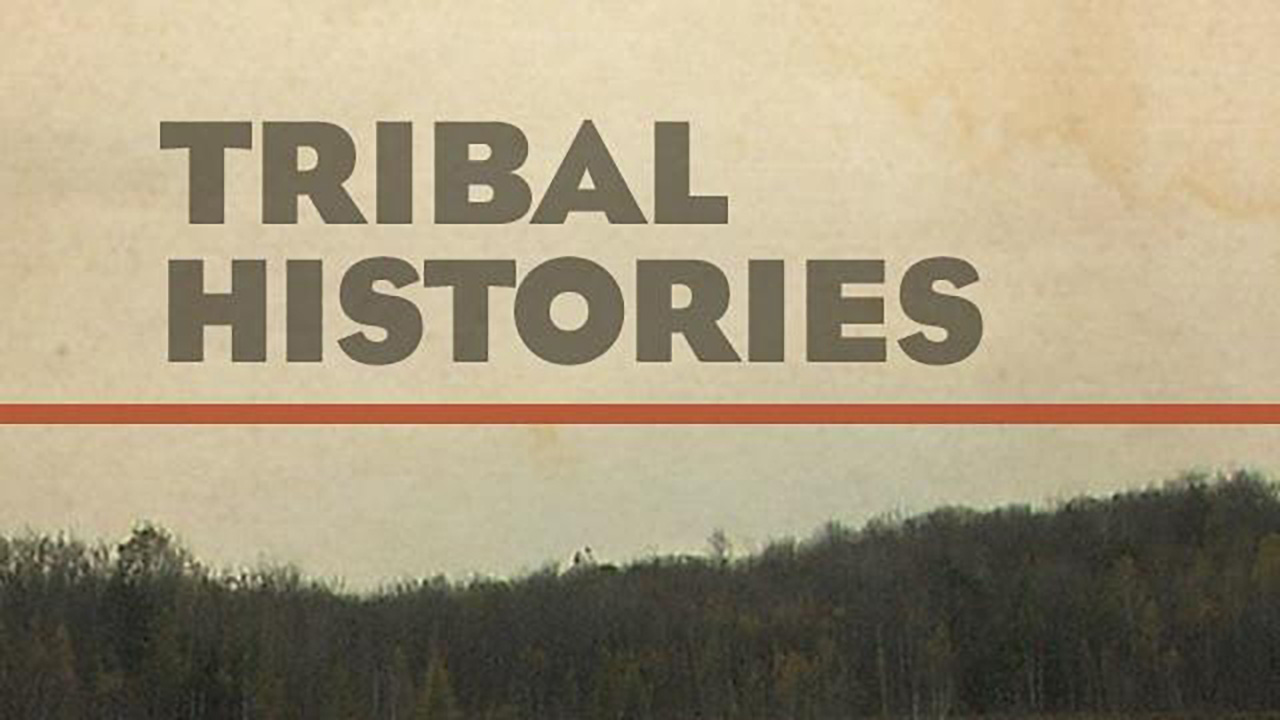
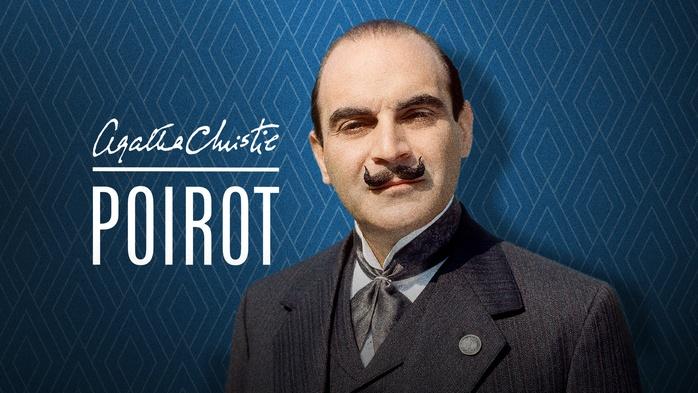

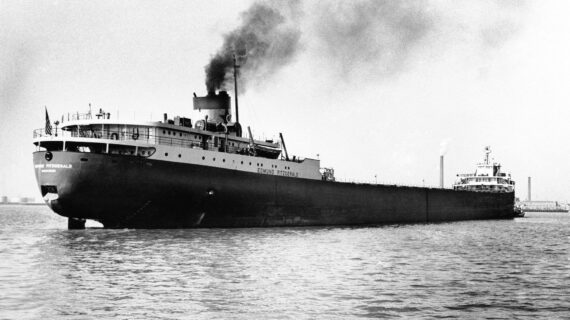

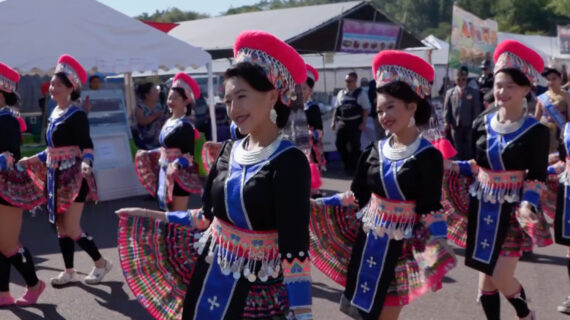
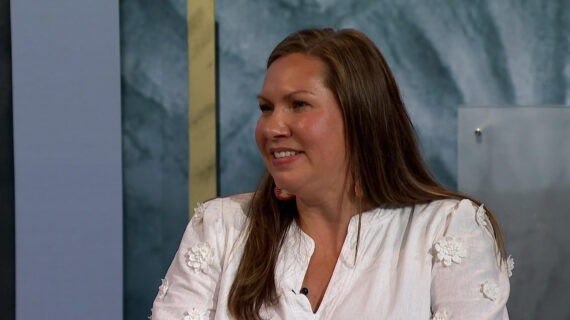
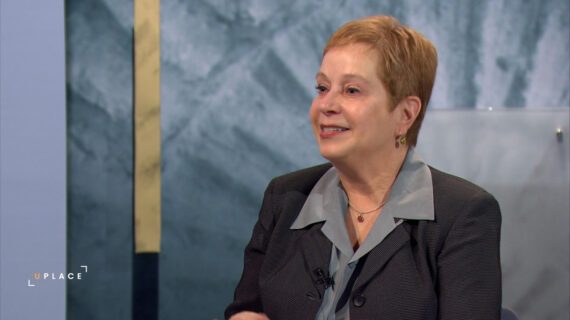

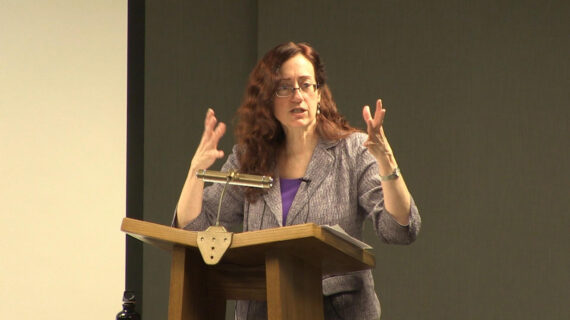
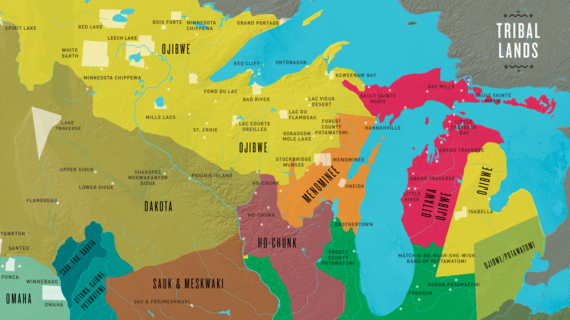
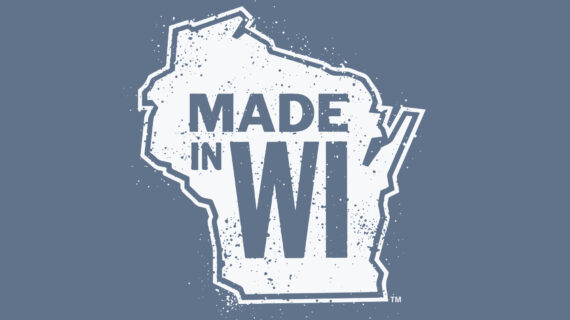

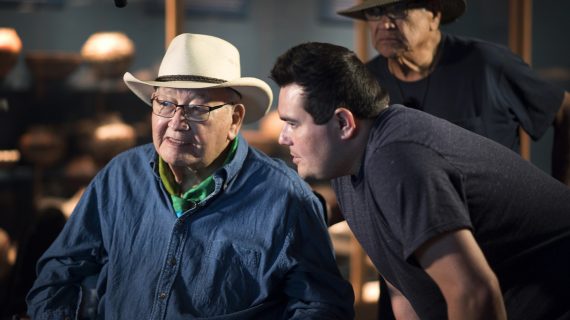


Follow Us